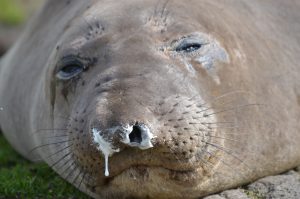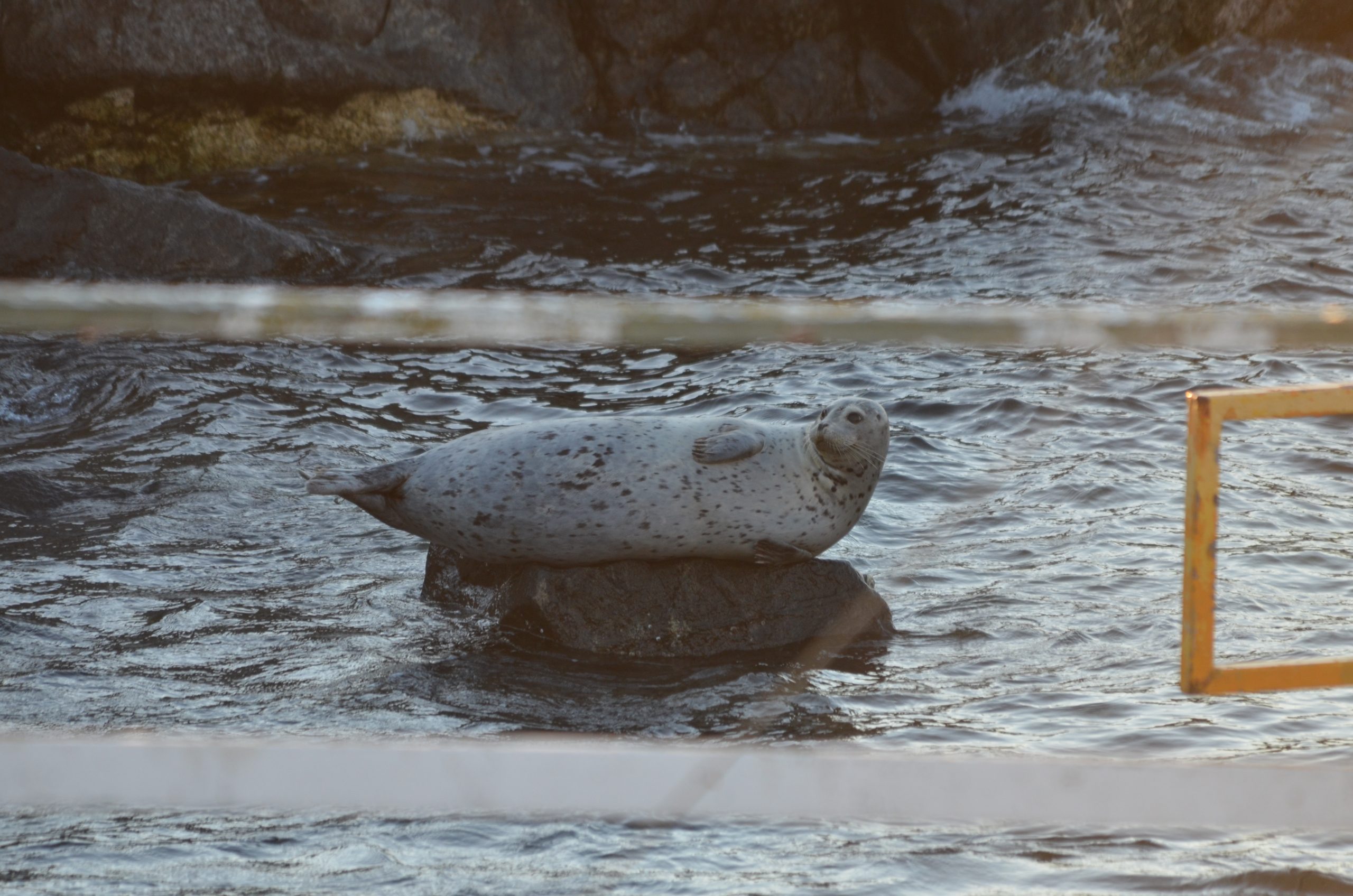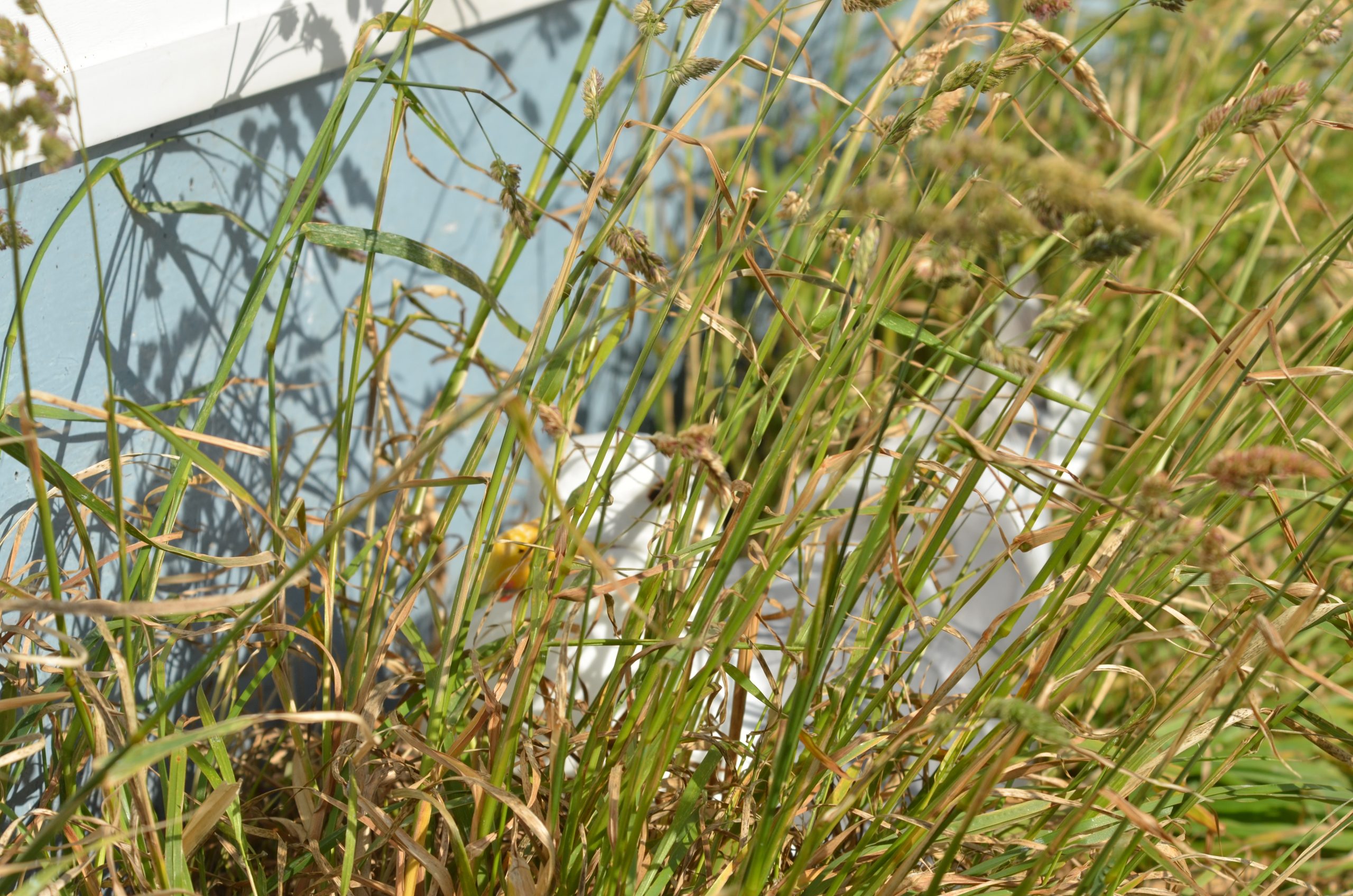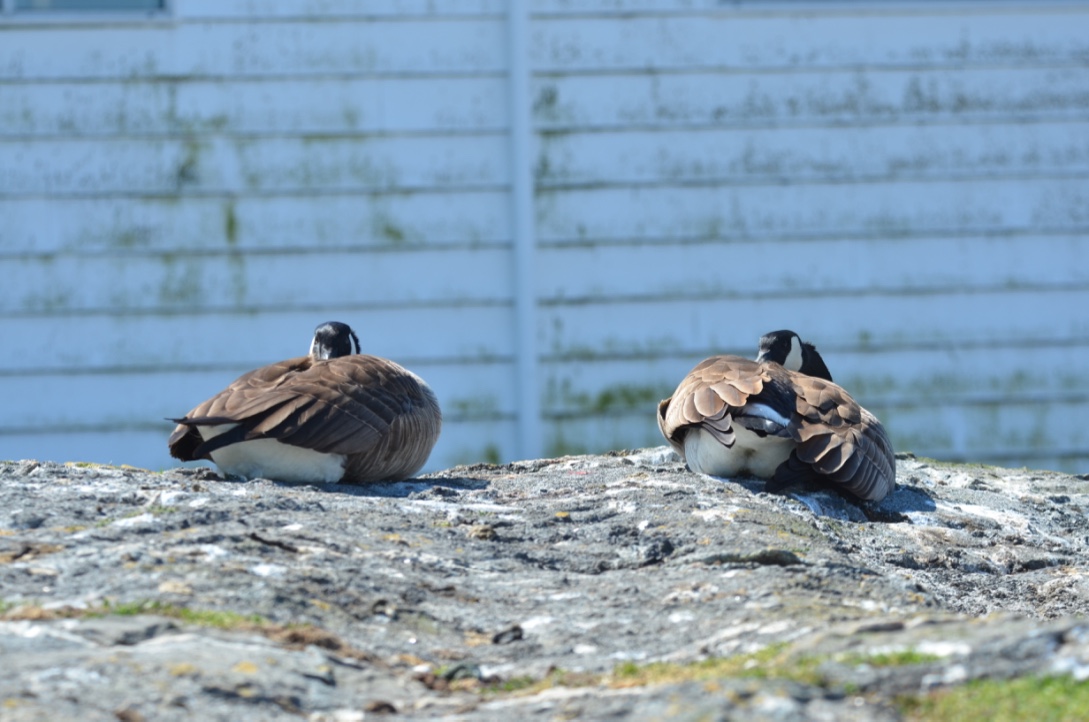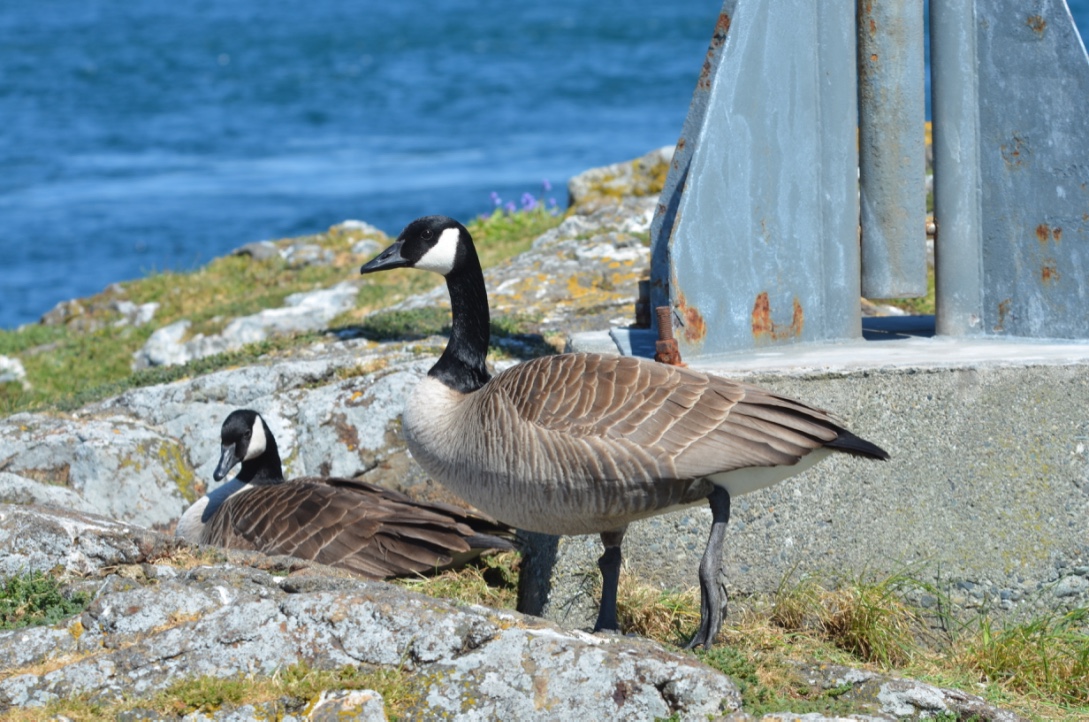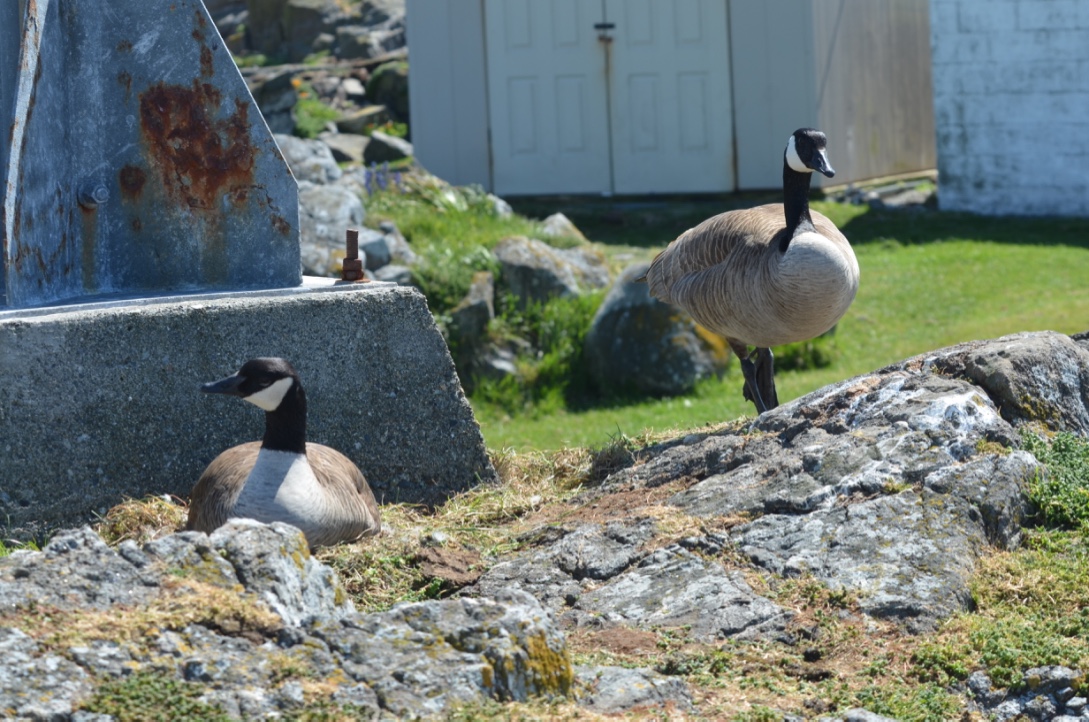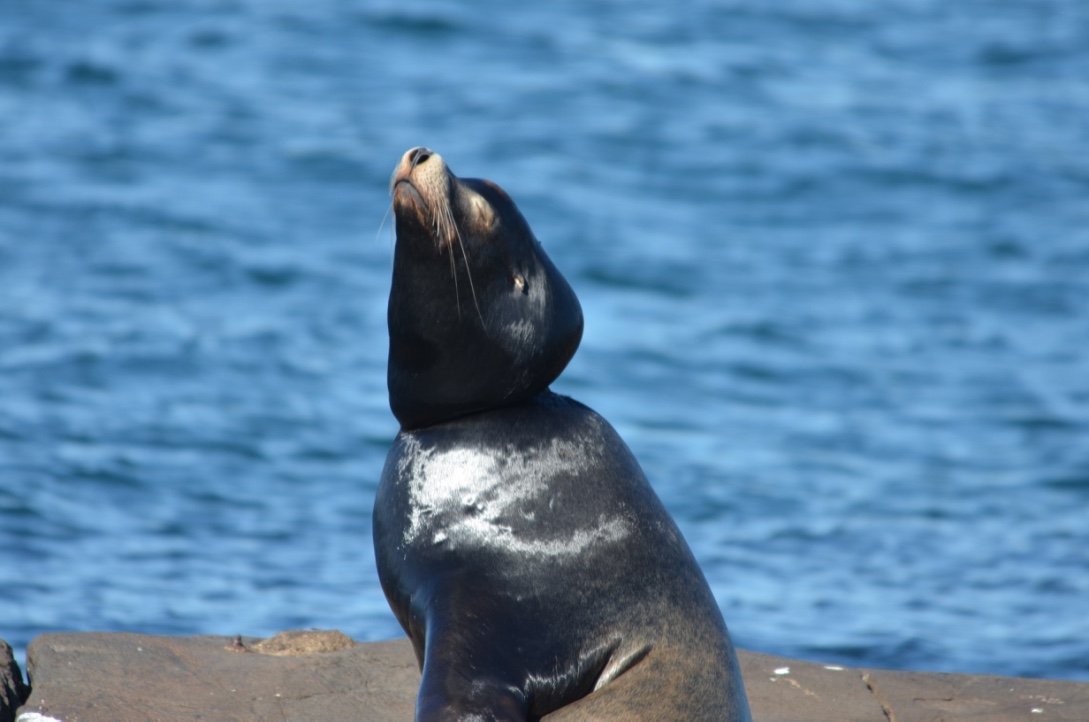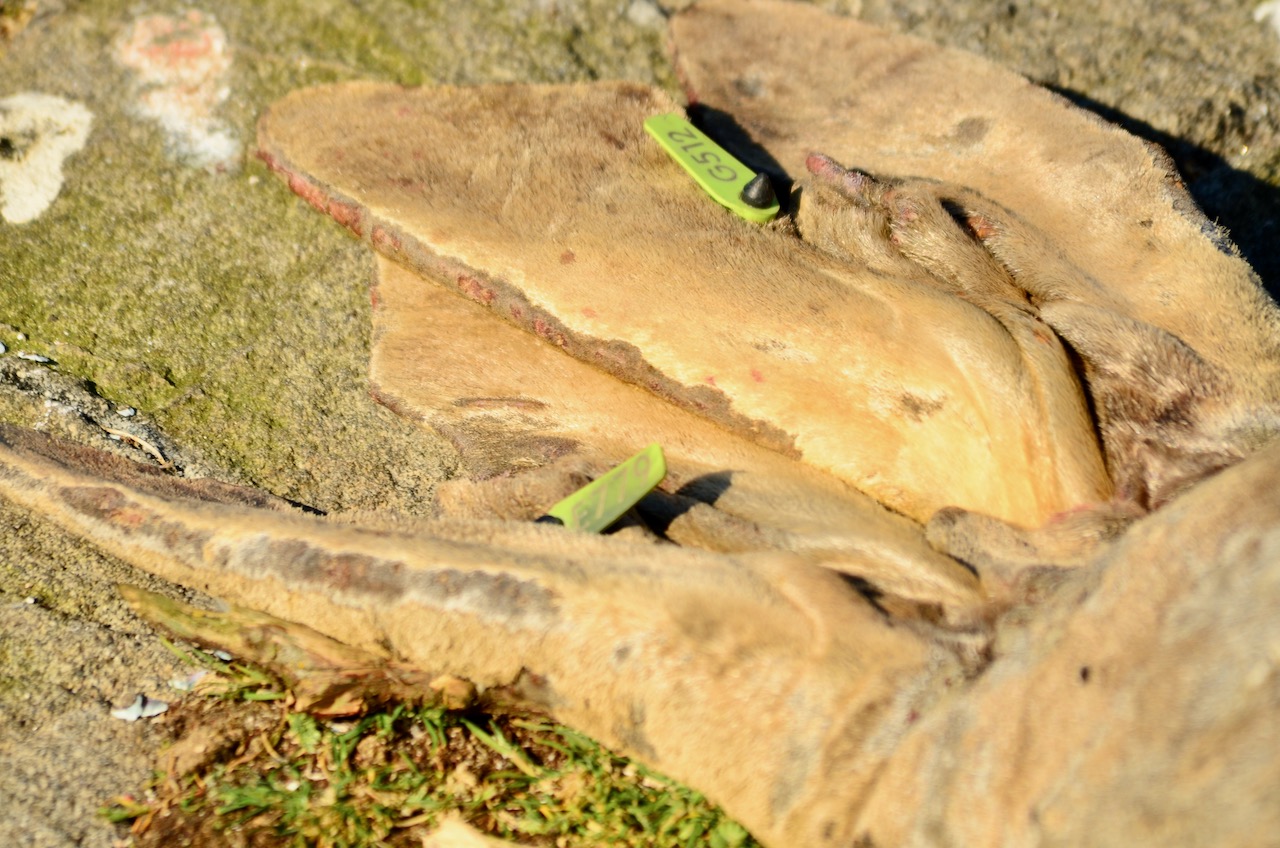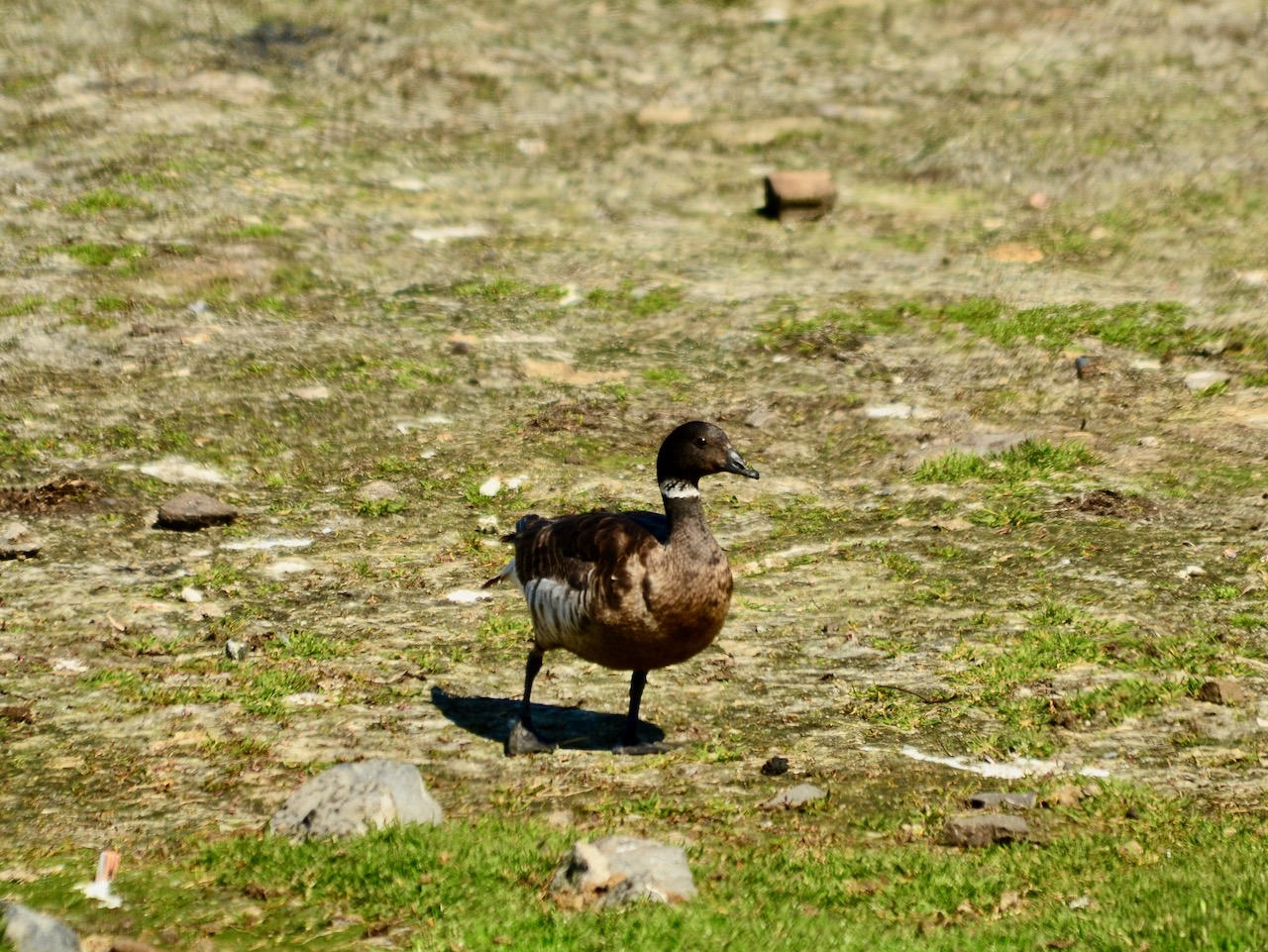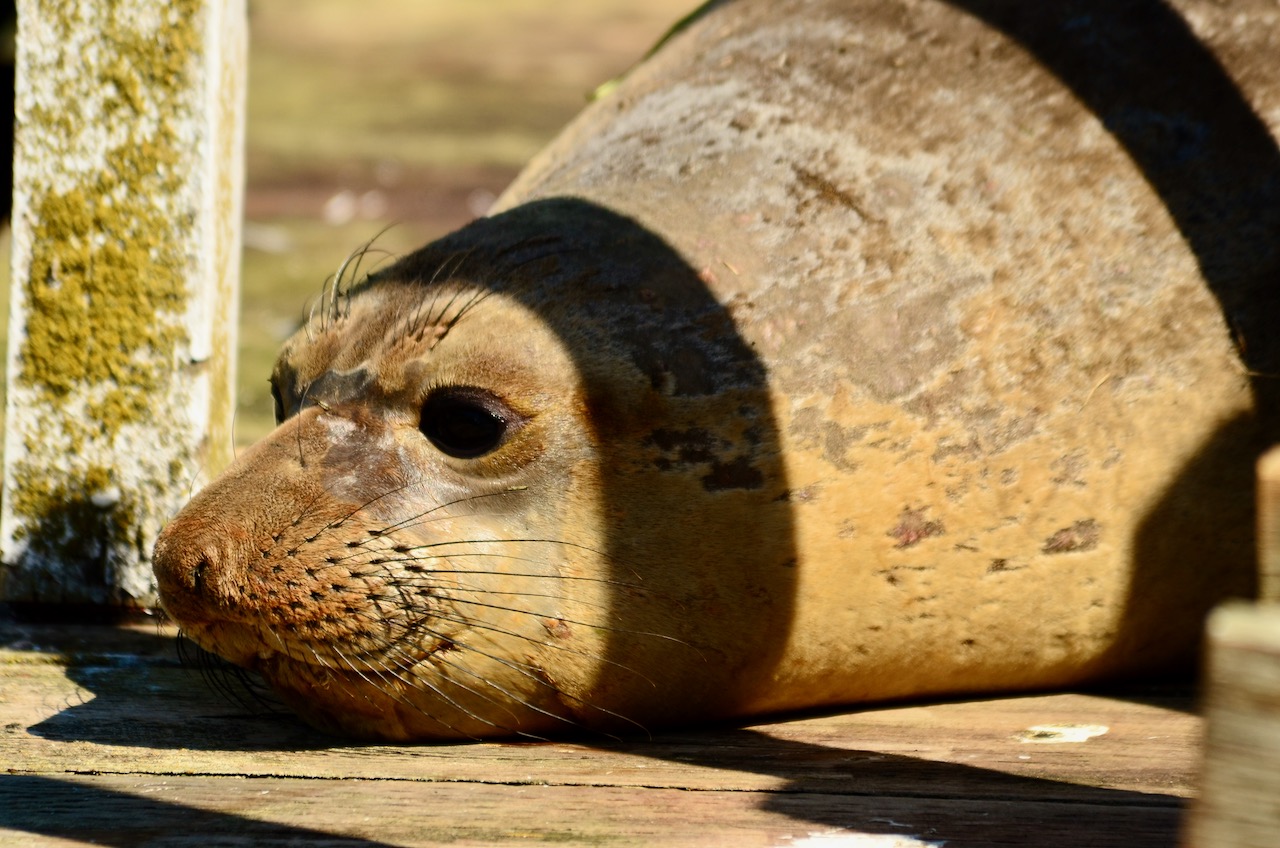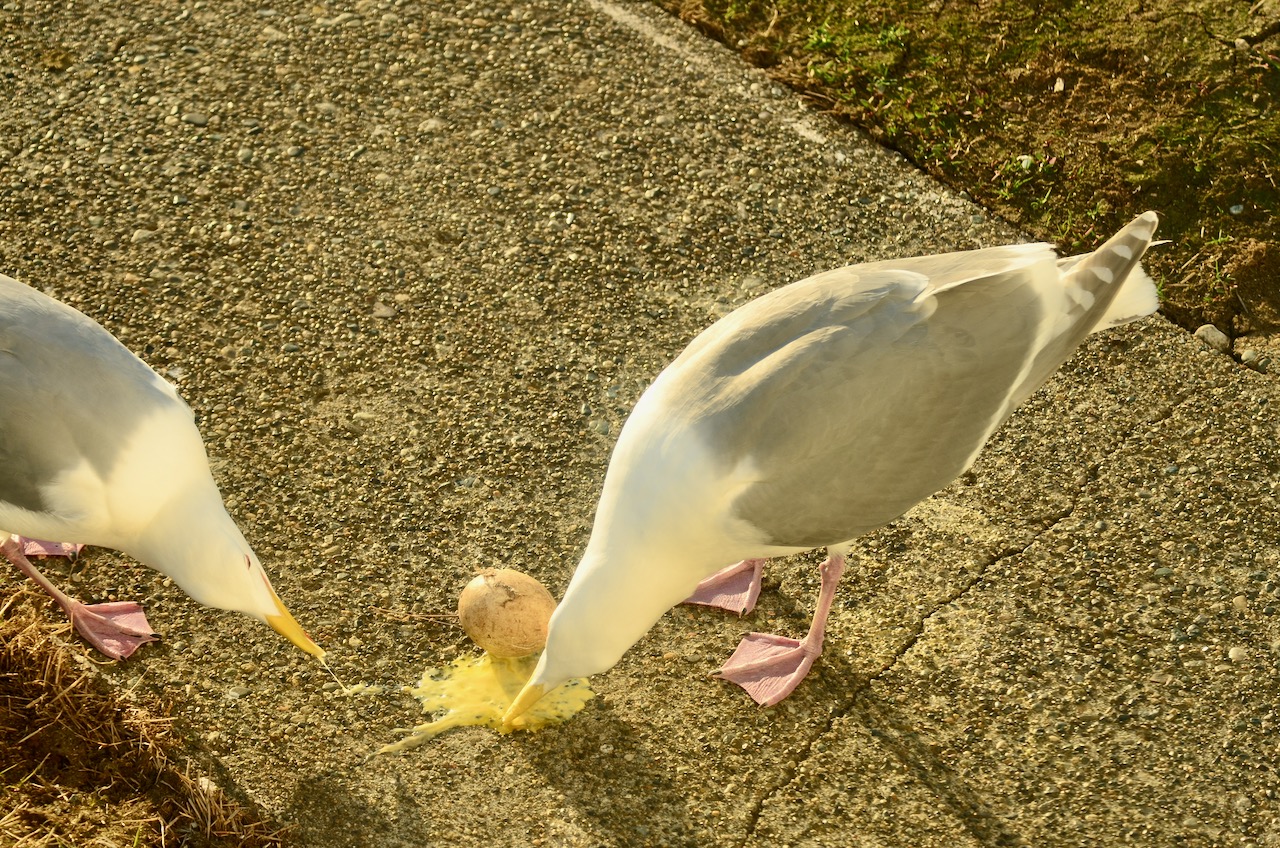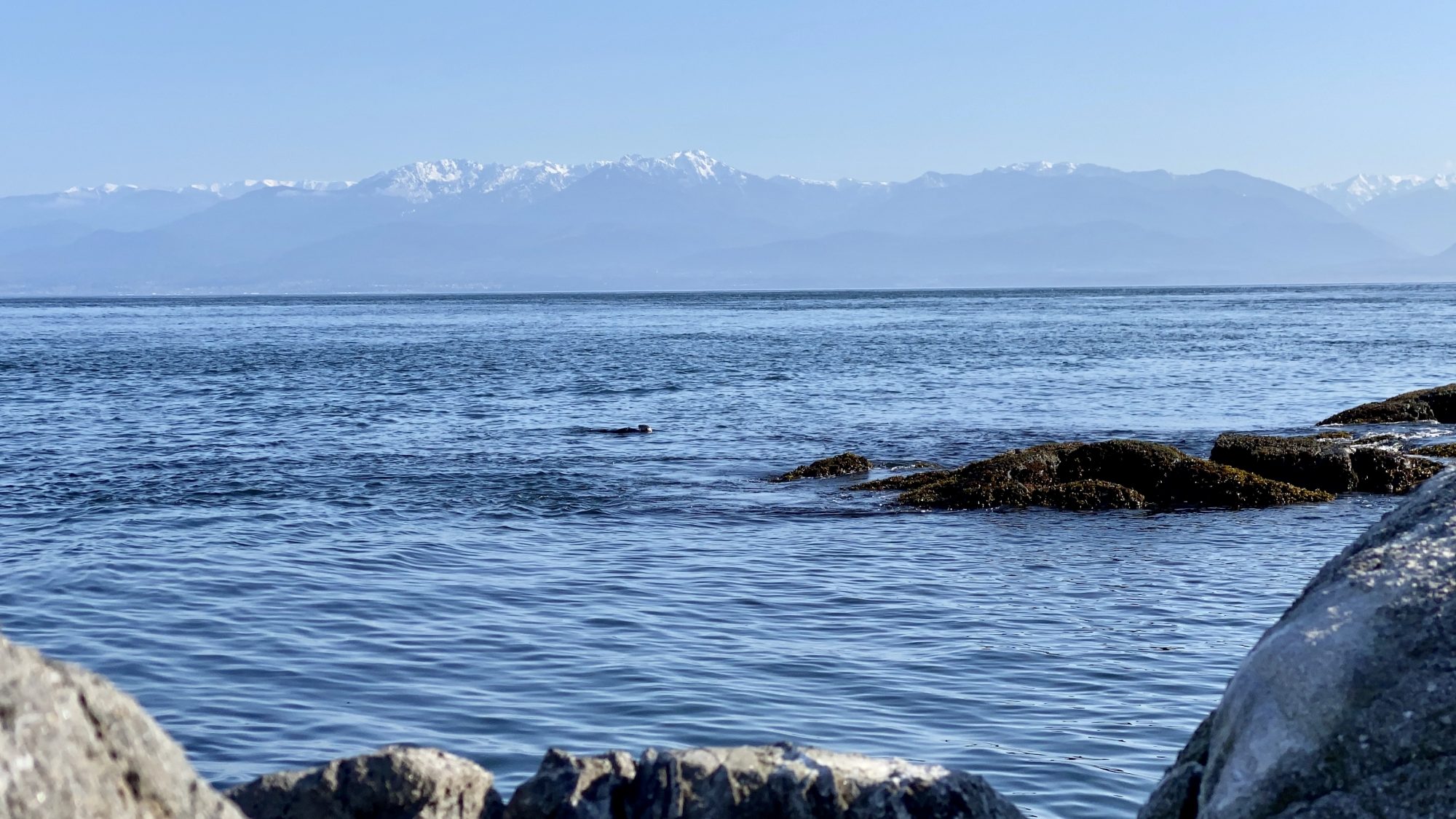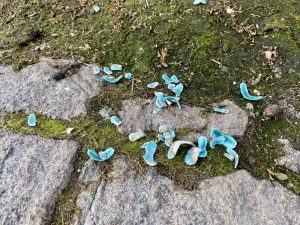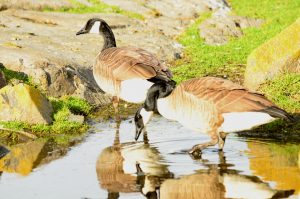On Wednesday, a Coast Guard Helicopter arrived with a repair crew to deal with the foghorn. While the Glaucous-winged Gulls around the helipad were disrupted temporarily, and many California Gulls on the Middle Islands took to the air, most were back in their places within a few minutes. The marine mammals from harbour seals to elephant seals were relatively unaffected, with the exception of several Steller’s sea lions which briefly moved from the jetty area. They returned within 10 minutes of the helicopter’s departure. Although the foghorn was given a clean bill of health in the good weather, it failed again on Thursday when the fog lasted several hours. The Coast Guard was notified.
Several branded sea lions are being seen.
A Common Raven (not common on Race Rocks) flew over the island around noon.
Census numbers show changes in the birds that have been breeding here. Most of the PIGU have moved on now that young have fledged. Likewise, GWGU numbers are dropping as young gulls take to the air.
Harbour seals and shorebirds have been adjusting to increasing presence of sea lions, with the former loafing more on the outer islets, and the shorebirds bunching up more against the rocks on the east of the island rather than on the beach.
This will be my last post as relief ecoguardian this year. It’s been a pleasure to be here again amongst the wildlife. I hope my personal project–renewal of the compost–will be appreciated by the ecoguardians who follow. For a more personal and detailed look at life as a relief ecoguardian, please check out my blog at http://nightingaleadventures.blogspot.ca
Ecological Notes:
- The young elephant seals appear to have moved on. The alpha male continues and has started his molt, moving between the Science Building for resting and the jetty for relief.
- Passerines seen in the last two days were Brown-headed Cowbird and Common Raven.
- Branded Steller’s sea lions (882R, 998E, 431Y, and 486Y) and 1 branded California sea lion (V29) were seen during census on Wednesday. 882R and a new California sea lion (U958) were seen on Thursday. The latter also visited Race Rocks in 2020.
- Bird action on the water over the last two days, with many birds feeding on the tide lines.
- 2 California sea lions breached the fences on Thursday Both were escorted back to the other side of the fences.
- See photos below for more ecological sightings.
Census (Wednesday, August 24):
Mammals
- Elephant seal: 1 (1 adult male)
- Steller sea lion: 210 (including branded (882R, 998E, 431Y, and 486Y)
- California sea lion: 343 (including branded V27)
- Harbour seal: 237
- Sea Otter: 1
- Harbour porpoise: 14 (to the west of the reserve)
Birds
- Black oystercatcher: 5 (4 adults 1 chick )
- Killdeer 1
- Black Turnstone: 85
- Surfbird: 10
- Common Murre: 300, plus another 550 beyond the reserve
- Pigeon Guillemot: 28
- Rhinoceros Auklet: 8
- Heermann’s Gull: 2
- California Gulls: 800, plus another 500 beyond the reserve
- Glaucous-winged Gulls: 343 adults 141 chicks
- Pelagic Cormorant: 1
- Brandt’s Cormorant: 11
- Common Raven: 1
- Brown-headed Cowbird: 1
Weather:
- Yesterday (Wednesday, August 24):
- Sky: Brief period of fog in the morning, then clear
- Wind: Variable calm-25 kts
- Sea: rippled to 2′ chop
- Temperature Low 12oC, High 18oC
- Today (Thursday, August 25):
- Sky: Foggy until mid-afternoon, clear and sunny to overcast
- Wind: W/WSW 16-37 kts
- Sea: light chop turning to high waves by evening
- Temperature Low 12oC, High 20oC
Facility Work:
- Solar panels cleaned daily. Windows washed.
- Fence line visually inspected and several posts put back into place.
Vessel Traffic:
- Many Canadian ecotour boats have been nearby and heading through the waters of the ecological reserve. Cruise ships are going through daily.
Here are photo highlights from the past two days. Click on the photos for larger views and captions.

431Y remains at Race Rocks

486Y still on Race Rocks

882R branded at Rogue Reef, OR in 2011

998R still on site

Sea Otter is back in the kelp off the east side of Race Rocks.

Foghorn repair crew landing

Coast Guard crew cleaning their solar panels.

Alpha male elephant seal beginning his annual molt.

Steller’s sea lions

California Gulls circling during helicopter approach

Marine mammals were unperturbed by the helicopter.

Adult and some juvenile gulls departing as helicopter landed.

Youngsters gathered into creches when the adults left due to helicopter landing

It didn’t take long for the gulls to resume normal activities.

Alpha male elephant seal beginning his annual molt.

Alpha male elephant seal beginning his annual molt.
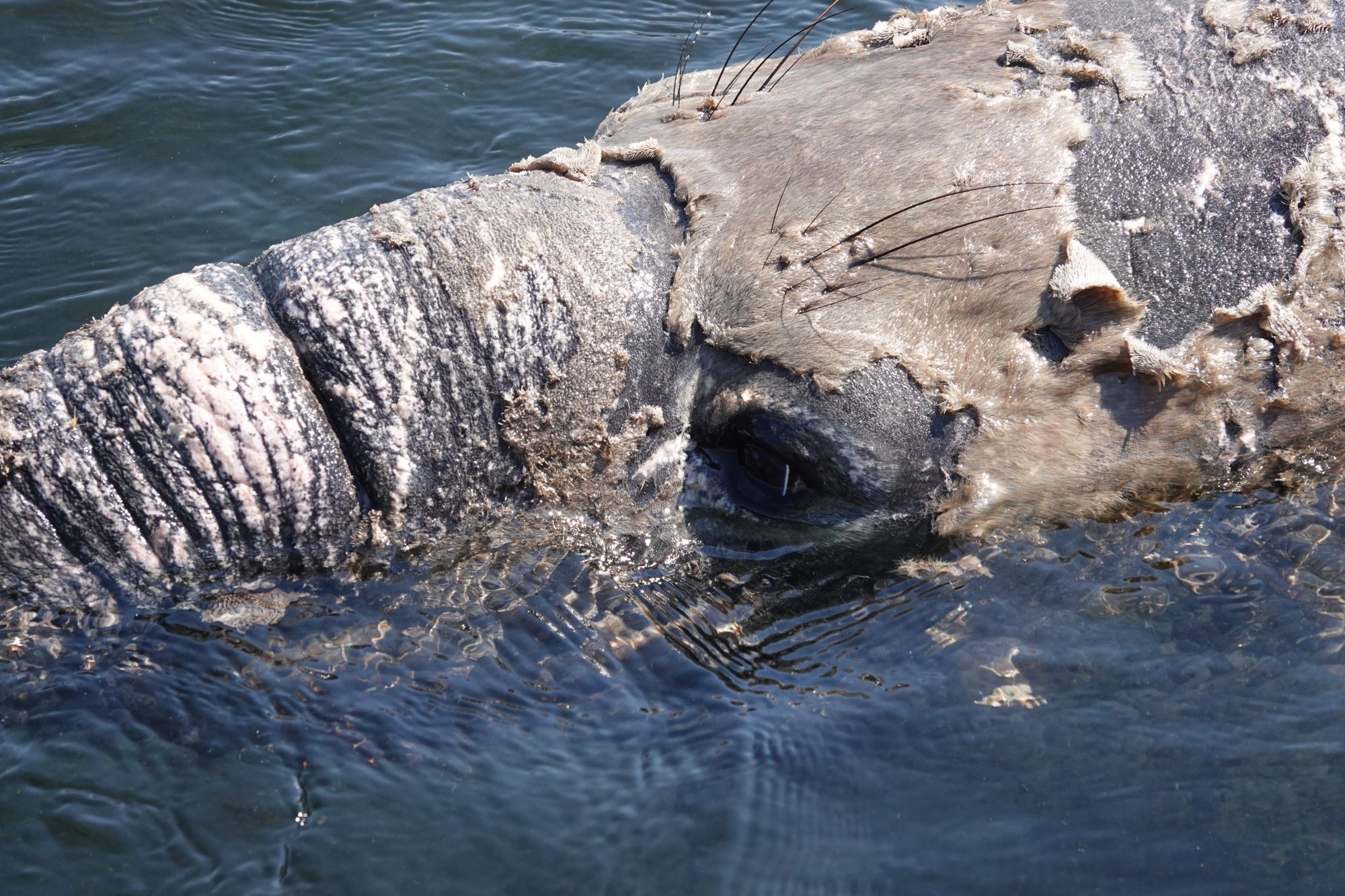
Alpha male elephant seal beginning his annual molt.

Brown-headed Cowbird

U958 was branded in Astoria, OR in 2015 and was previously seen at Race Rocks in 2020.

Surfbird molting from its breeding plumage.

Neck wound caused by entanglement.

Fence breach!
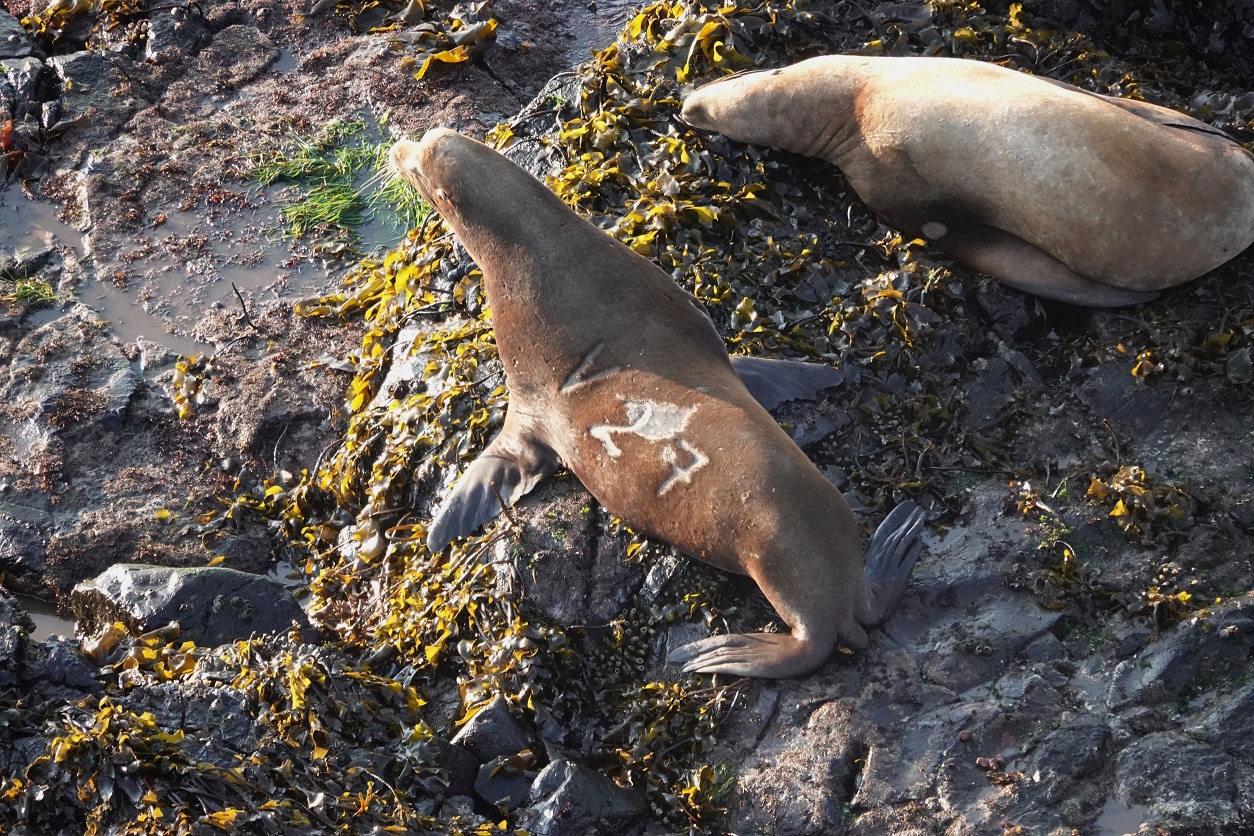
California sea lion branded at San Miguel Island, California in 2010.































